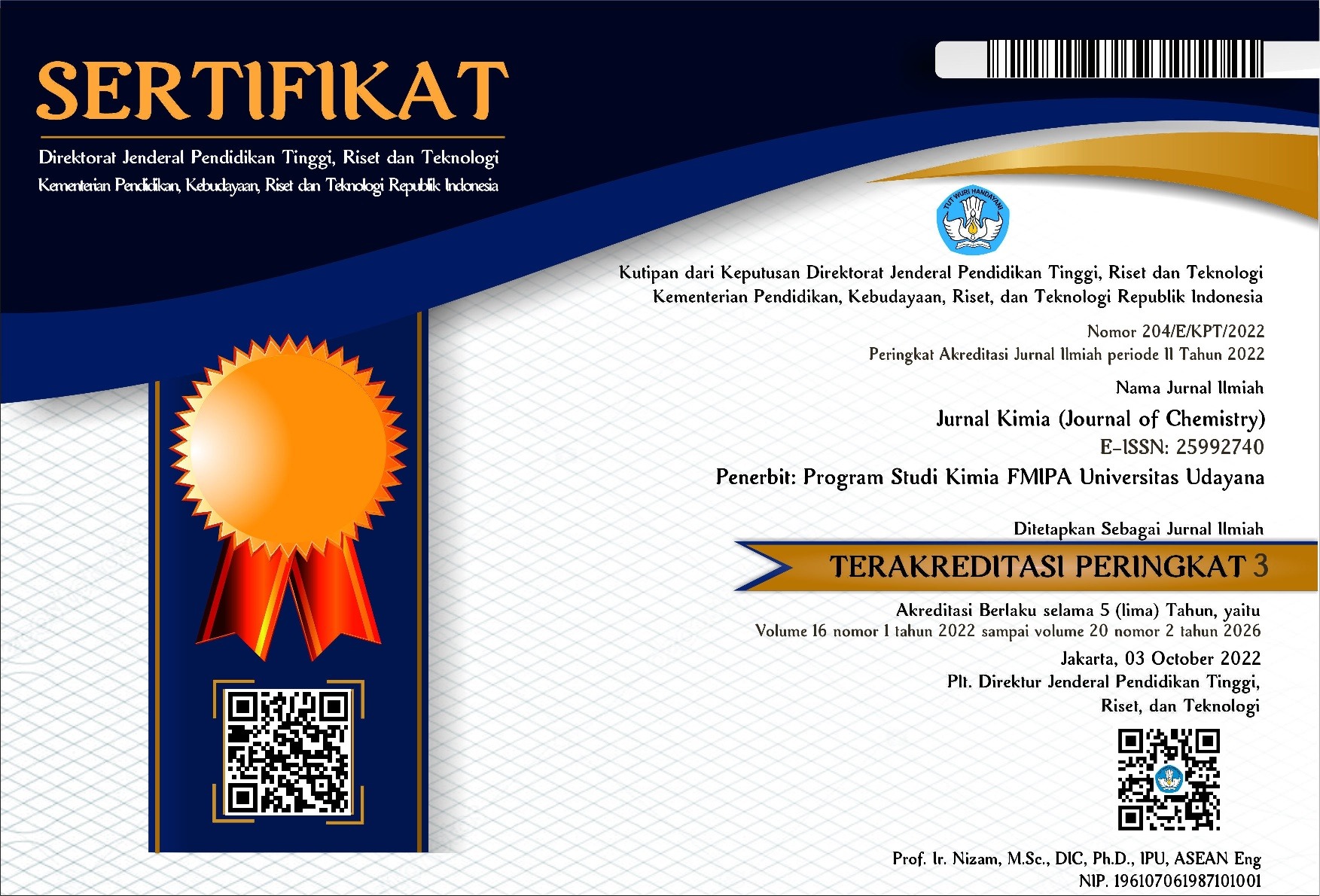EFEKTIVITAS EKSTRAKS ETIL ASETAT DAN ETANOL DAUN BELUNTAS (Pluchea indica linn) SEBAGAI INSEKTISIDA ALAMI DENGAN BIOINDIKATOR ULAT HONGKONG (Tenebrio molitor)
Abstract
Synthetic insecticide overuse can have a number of detrimental effects, including pest resistance, environmental
pollution, ecosystem damage and health risks for humans. Therefore, it is necessary to look for natural insecticides
that are safe and more environmentally friendly. One potential solution is the use of bioactive compounds from
plants such as beluntas leaves (Pluchea indica), which contain flavonoids, tannins, essential oils, chlorogenic acid,
sodium, potassium, magnesium and phosphorus. Meanwhile, the roots also have flavonoids and tannins. These
compounds belong to a group of secondary metabolites that have the potentially active ingredients in natural
insecticides. The goal of this research is to ascertain the effectiveness of ethyl acetate extract and methanol extract
as natural insecticides using Hong Kong caterpillar bioindicators and phytochemical screening tests on the two
extracts. Insecticide testing is carried out using 2 methods, namely the contact poison method and the residue
method. Tests were carried out on 20 Hong Kong caterpillars with 3 repetitions for each treatment. Observation
time is 5, 10 and 15 minutes. The control (+) used abacel 18 and the control (-)tween 80. According to the findings,
the contact toxicity method was more effective than the residue method in killing mealworms and the methanol
extract was outperformed than the ethyl acetate extract, this was because the secondary metabolite content in the
methanol extract was higher. Many contain flavonoids, alkaloids, saponins and tannins, while ethyl acetate extract
only contains flavonoids.
Downloads

This work is licensed under a Creative Commons Attribution 4.0 International License





